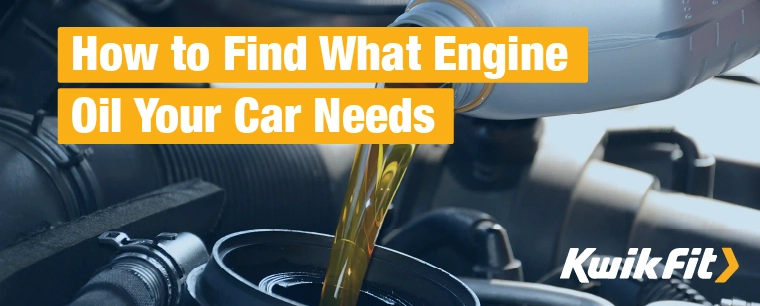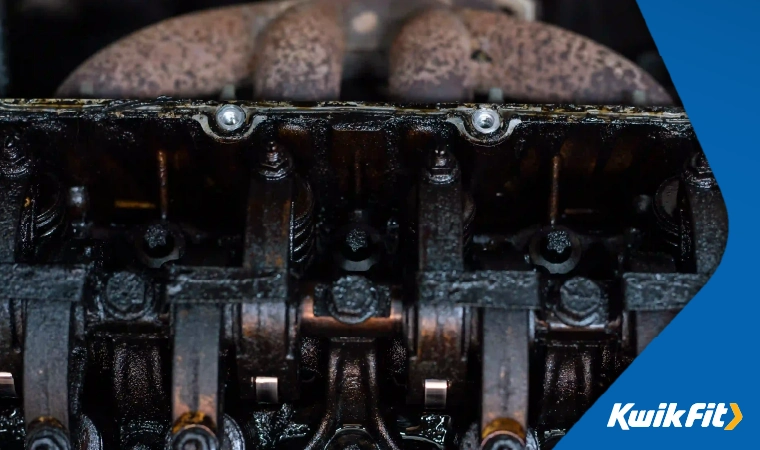How to Find What Engine Oil Your Car Needs
Jack Dreyer | Monday 16th October 2023 2:00pm

Engine oil is one of the most important elements in your car’s engine system. But, if you know you need to change or top up your car’s engine oil, a quick walk through the oil section of an auto shop can leave you cross-eyed between the mass of brands, cryptic numbers, codes, and labels on the shelves.
Surely oil’s just oil, right? Unfortunately, it’s a little more complicated than that.
Here’s how to find out what engine oil your car needs.
Note: if you already know what engine oil is, jump straight to section 3!
What’s engine oil for & why do you need to check it?
Let’s begin with understanding what engine oil is and why you need to check it.
To put it simply, engines are (usually) big hunks of metal that fit together in such a way as to carefully control thousands of explosions a minute. This page goes into the nuts and bolts of how engines work but, essentially, the combustions within the cylinders push pistons, which turn a crankshaft, which turns a flywheel, which is connected to a clutch and the rest of the car.
All of this movement of metal over metal creates a huge amount of friction and therefore heat.
Engine oil exists for the sole purpose of lubricating the engine and reducing wear – but it also significantly reduces the heat of an engine as a result of reducing friction. Over time, however, fragments of metal dust accumulate in the engine oil and “gum” it up. If you leave it long enough, saturated oil can actually do a lot of damage to engine components because it becomes like liquid sandpaper.
It’s therefore essential to check it regularly so that you:
- Know when to change it
- Can spot unusual drops in engine oil before it becomes a problem
Crucially, the condition of your engine and engine oil aren’t checked in an MOT test. A technician may have a look and note the condition, but it won’t be part of the MOT test criteria. So it’s really important to check the level and condition yourself – here’s how to check your engine oil at home. You should do this at least every two weeks and definitely before a long drive; you don’t want to be in the middle of a motorway when you find out your engine doesn’t have any oil!
2. How often does engine oil need to be changed?
How often your engine oil needs changing depends a lot on the car, engine size & type, and oil type you’re using. It also depends how often you drive, how you drive, and what conditions you drive in.
A usual rule of thumb is that engine oil should be replaced every 3000-5000 miles. This means roughly once a year for most people who drive daily but, again, it may be more or less depending on your particular conditions.
Problems with the engine and exhaust system can also cause your car to burn up oil more quickly – so don’t wait until every 5000 miles to check it!

3. How do you know what engine oil you need?
The easiest way to find out what engine oil your car needs is to check your vehicle handbook – which is usually kept in the glove compartment. It should list the specific type of oil, the appropriate viscosity, and the necessary volume of oil for your engine.
If you don’t have your car’s handbook, you can use a tool like Mobil’s engine oil checker to quickly see what type and viscosity you need.
What do engine oil numbers mean?
Engine oil viscosity is usually presented in a structure like “5w30”. The first part of this, before the “w” (which stands for “winter”), refers to the viscosity of the oil in cold weather. The lower the number, the more free-flowing the oil will be (and therefore the better it’ll be able to flow & lubricate during cold starts). The second part represents the viscosity rating when hot.
You need an oil to remain free-flowing in order to lubricate, but if it gets too thin then it won’t be able to lubricate particularly well.
4. What are “low-SAPS” oils?
Diesel cars need diesel particulate filters in their exhaust systems to reduce emissions. If you drive one, you’ll also need to use oils that are rated as “low-SAPS” – this stands for Sulphated Ash, Phosphorus, and Sulphur. The reason here is that a normal oil (that is, not a low-SAPS one) is likely to block up the DPF really quickly – which in turn means your car will keep stalling as it can’t exhaust burnt fumes from the engine cylinders.

Combine a Service with an MOT
If you’re still unsure of what engine oil you need – take your car to your local Kwik Fit centre for expert help and affordable oil & filter changes. And, even though your car’s engine oil won’t be a factor in an upcoming MOT, combining a full service with an MOT at your local centre helps you keep your car in the best condition while also spotting damage before your car fails an MOT.
Any facts, figures and prices shown in our blog articles are correct at time of publication.
Featured Articles
Is it Illegal to Drive With One Headlight?
Saturday 19th July 2025
Wondering if it’s illegal to drive with one headlight? Learn about the safety risks and penalties of illegal blown bulbs and why you should fix them promptly.
Air Con in EVs & Hybrids: Experts Answer Your Questions
Monday 30th June 2025
Does air con drain EV batteries? Can you use the air con while charging an electric car? Find out the answers to these questions & more from Kwik Fit’s experts.
Why Is Your Car Making a Noise? Fixes & Tips
Friday 13th June 2025
When your car starts making unexpected noises, it can certainly be quite disconcerting; it may be nothing to worry about, but here’s what you need to know.









